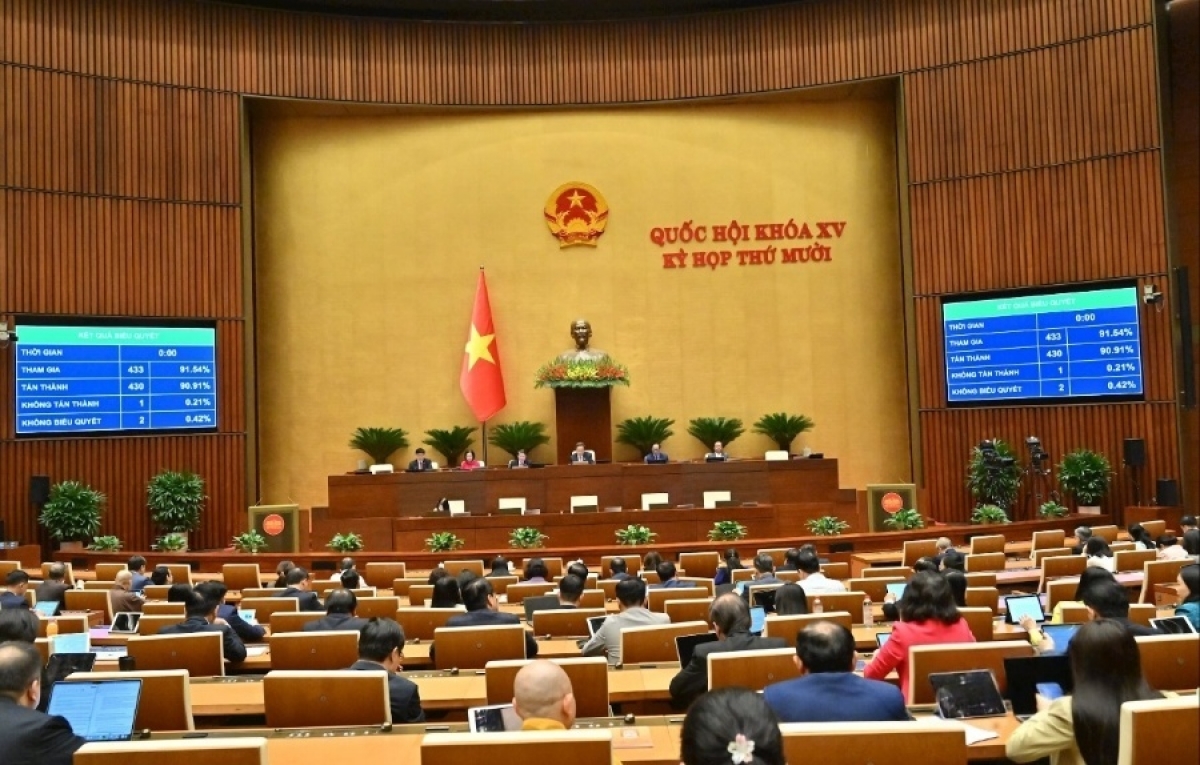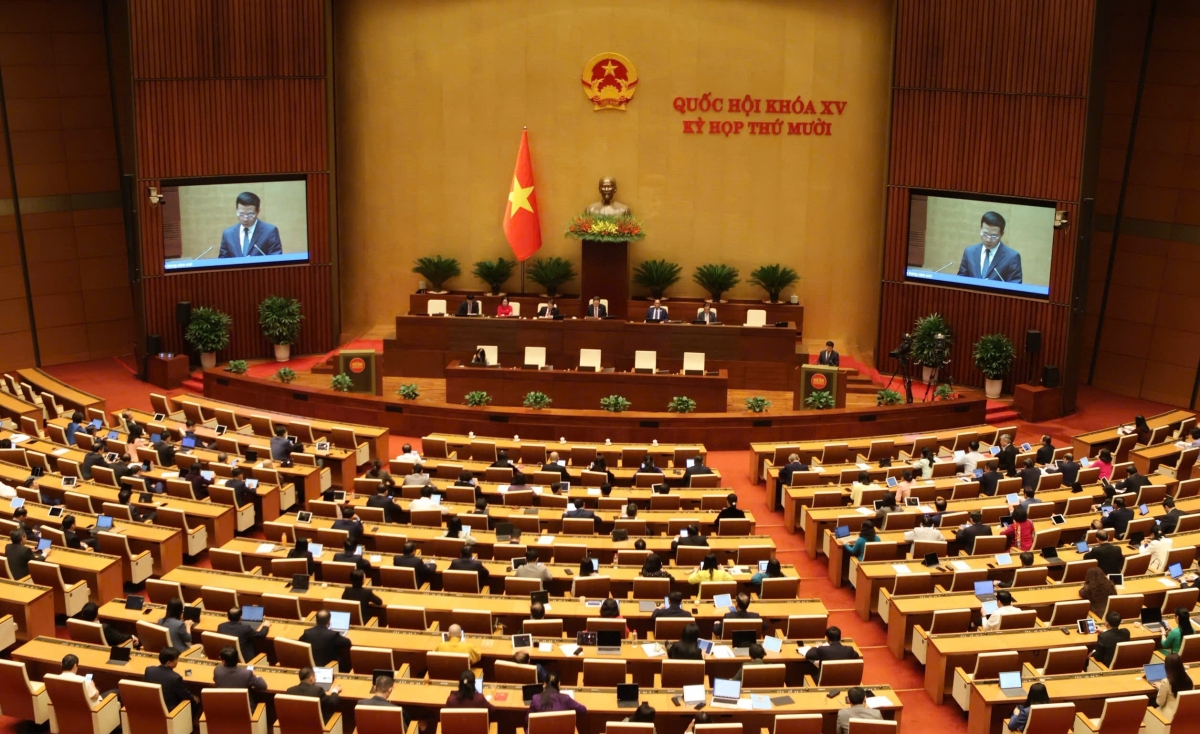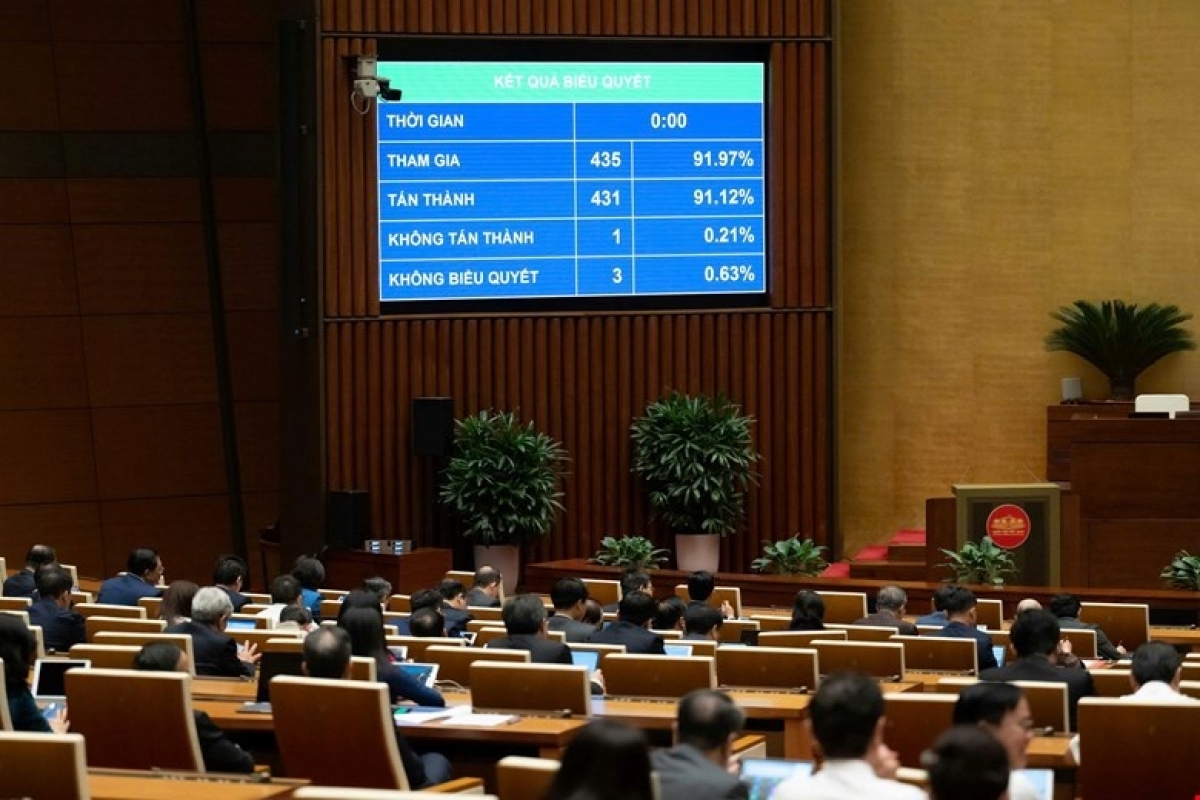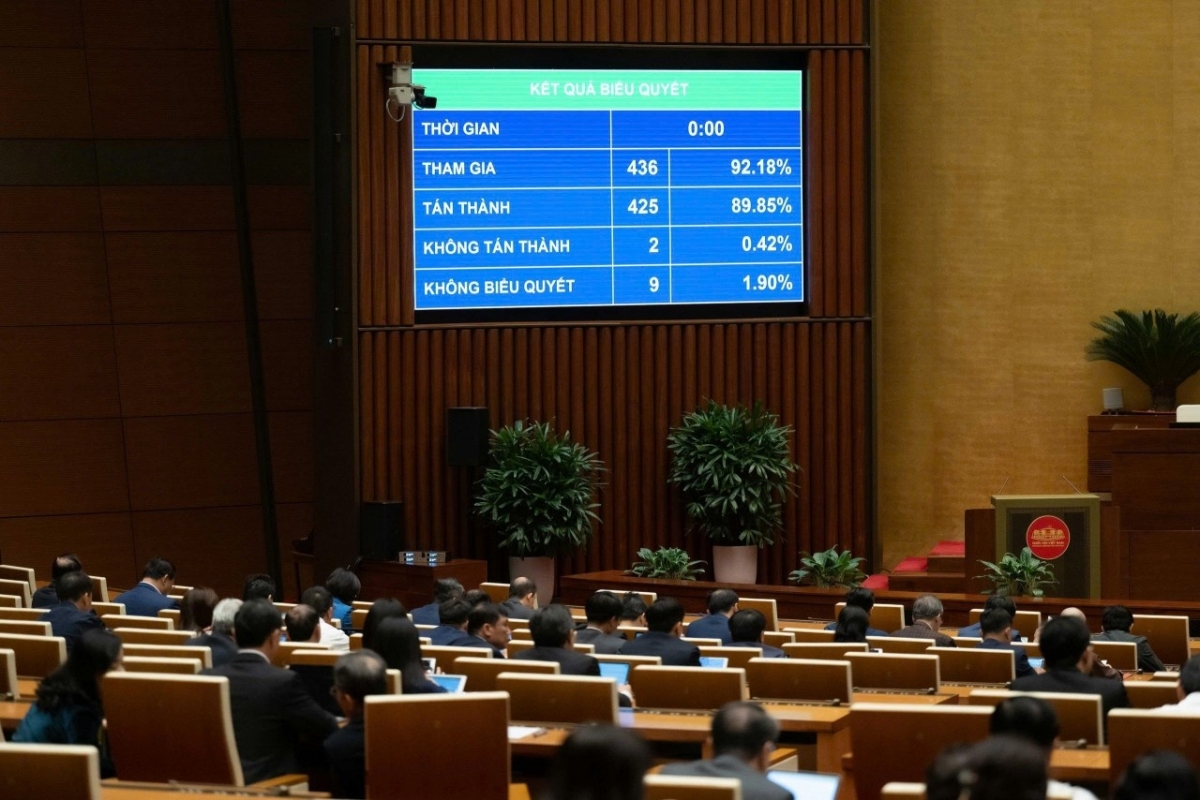INTERNATIONAL INVESTMENT
AND PORTAL
The government has demanded that the Ministry of Finance (MoF) closely follow implementation of the $15 billion Programme on Socioeconomic Recovery and Development (PSRD) so that a new scheme on mobilising financial resources can ensure continued deployment, accordingly helping the economy to achieve a desired growth rate of at least 6.5 per cent this year.
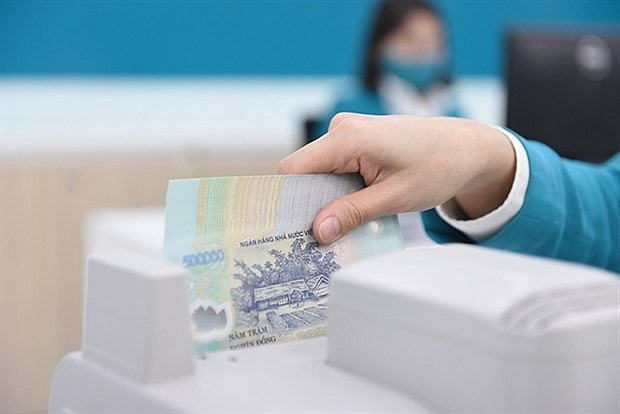 Leaders declare intention to up PSRD deployment, photo VNA
Leaders declare intention to up PSRD deployment, photo VNA
The government has also ordered the State Bank of Vietnam (SBV) to expeditiously submit to the government in this month for enacting a new decree on amending and supplementing Decree No.31/2022/ND-CP dated May 2022 on the lending rate support from the state budget for bank loans extended to enterprises, cooperatives and household businesses.
This is aimed to help remove difficulties for enterprises through supporting them with a 2 per cent lending rate assistance package for enterprises, cooperatives, and households via commercial banks.
Meanwhile, other ministries and localities nationwide have also been requested by the government to soon carry out projects which have had sufficient procedures under the PSRD.
“After one year of implementation, despite some achievements, the PSRD remains slow in implementation of some policies for supporting people and enterprises, whose deadline for deployment has terminated, and some other policies have produced limited results, failing to meet desired results,” said Minister of Planning and Investment Nguyen Chi Dung. “At the same time, the allocation of development investment capital within the PSRD also remains slow.”
According to the Ministry of Planning and Investment, it is estimated that the total disbursement sum of all support policies under the PSRD’s has reached more than $3.51 billion.
Specifically, as for schemes on providing preferential loans via Vietnam Bank for Social Policies, this bank disbursed all types of loans valued at $697 million under the PSRD, including those for buying computers and equipment for online study ($35.9 million); purchasing social houses ($175.9 million); employment assistance ($434.8 million); non-state nurseries and primary schools ($8.4 million); and for inhabitants in ethnic minorities and mountainous areas ($42.26 million).
In addition, as of the end of 2022 the bank supported poor people with a package of $38.17 million with an annual lending rate of over 6 per cent.
Regarding the package for supporting factory workers in housing rental, its validity has terminated so far, and localities have disbursed about $162.8 million.
As for policies on exempting and reducing taxes and fees, extending tax payment and land rental, by late January, about $2.28 billion was disbursed for exempting and decreasing taxes and fees, and tax payment and land rental worth $4.6 billion was extended – including $4.03 billion for extending the payment of VAT, corporate income tax, personal income tax, and land rental, and $363.9 million for extending the payment of special consumption tax for domestically produced or assembled automobiles.
Nonetheless, businesses are demanding more assistance from the policy.
“We want to get supported in terms of taxes and fees,” said Nguyen Minh Thang, director of rice company Hoang Ngoc Trading in Hanoi. “Like many other businesses, we are now burdened by a raft of different types of taxes, as well as assorted fees such as commodity storage and transportation.”
According to the General Statistics Office, last year, the number of businesses with halted operations hit 73,800, up 34.3 per cent on-year. The number of those with halted operations and waiting for dissolution reached 50,800, up 5.5 per cent on-year; while the number of those having completing dissolution procedures was 18,600, up 11.2 per cent on-year. On average, each month saw about 11,900 enterprises withdrawing from the market.
When it comes to the 2 per cent lending rate assistance package for enterprises, cooperatives, and households via commercial banks, the SBV reported that by late last year, commercial banks disbursed $5.82 million as preferential lending rate for loans of nearly $1.3 billion.
Just over a year ago, the National Assembly allowed the use of a maximum of $1.74 billion for this 2 per cent lending rate assistance package. However, the SBV reported that by late 2022, disbursement from the initiative was being carried out at a very slow pace, standing at only 0.3 per cent of the total.
“It is likely that this package will not be able to be disbursed wholly this year. Thus, the SBV would need to review the package and calculate the money that will not be able to be used and propose solutions and then report to the government and the prime minister,” said Minister Dung.
“The SBV should report to the government on revising Decree 31 in a manner that procedures and conditions for obtaining loans must be simplified, and the best conditions must be created to support enterprises to save loan costs,” he added.
The PSRD was adopted early last year and is expected to enable the economy to achieve a higher level of growth, at 6.5-7 per cent for the 2021-2025 period.
The programme covers several key components: reopening the economy pertaining to enhancing medical capacity, and pandemic prevention and control ($2.6 billion); ensuring social welfare and employment ($2.31 billion); assisting enterprises’ recovery, cooperatives, and business households ($4.78 billion); developing infrastructure ($4.95 billion); and increasing institutional and administrative reform, as well as improving the investment and business climate. Moreover, another $434.8 million will be mobilised from non-state budget financial funds.
 Government launches action plan on Hanoi development
Government launches action plan on Hanoi development
The Government has issued an action plan for implementing the Politburo’s Resolution No 15-NQ/TW on orientations and tasks for the development of Hanoi by 2030, with a vision to 2045.
 Further amendments could ease tax environment
Further amendments could ease tax environment
The Vietnamese government made welcome efforts in providing support to all enterprises in 2022 with effective tax policies including deferral and VAT reduction of 2 per cent, as well as positive and transparent changes of regulations such as the circular on tax administration, including in e-commerce.


